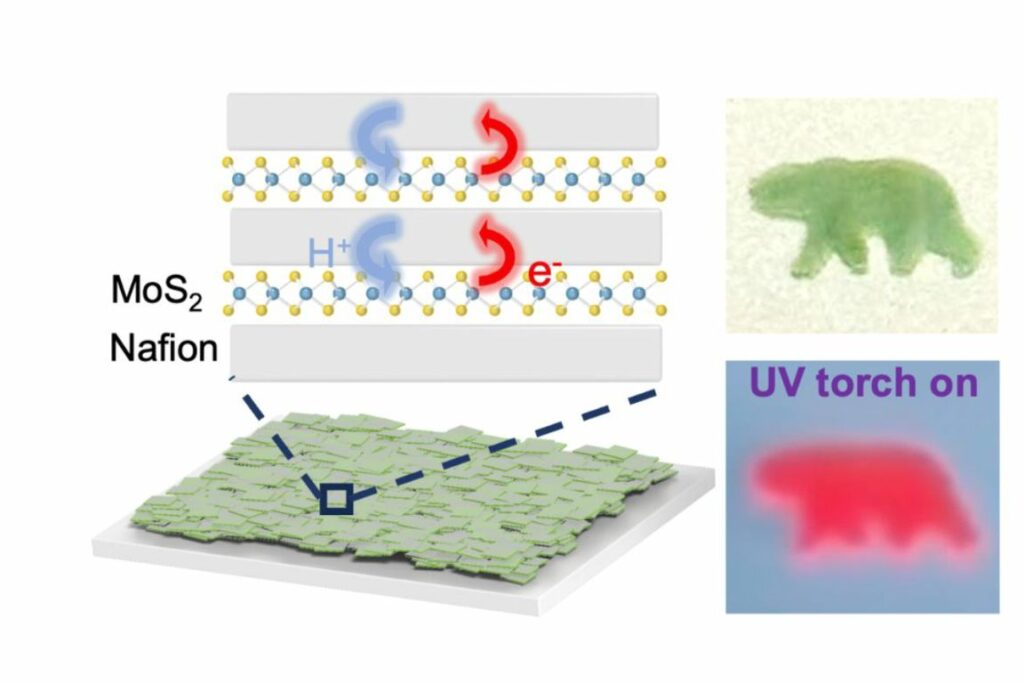
A pioneering research team at the California NanoSystems Institute at UCLA has unveiled a groundbreaking light-emitting material poised to transform the field of photonics. Utilizing a semiconductor known as molybdenum disulfide, combined with Nafion, a polymer commonly used in fuel cells, the team has created a printable, large-area, stretchable membrane that emits bright light. This innovation holds significant promise for the future of photonic devices, offering a durable and cost-effective solution for chip-integrated light sources in photonic computing.
The development comes at a time when the potential of photonics—a technology that leverages the properties of light for faster and more energy-efficient operations than traditional electronics—is increasingly recognized. Current applications of photonics include lasers, fiber-optic telecommunications, solar cells, and smartphone cameras. The potential for photonic computing to vastly enhance the capabilities of today’s electronic computers is immense, and this new material could be a key enabler.
Background and Challenges
Photonics technology is predicated on the unique properties of light, which allow for faster processing speeds and lower energy consumption compared to electronic signals. However, integrating conventional semiconductors into photonic circuits has its limitations. Molybdenum disulfide and other two-dimensional (2D) materials present a promising alternative, offering ultrathin, flexible components ideal for such applications.
Despite their potential, adapting 2D molybdenum disulfide for photonics has proven challenging. The ultrathin layers are fragile and typically emit minimal light. The UCLA team overcame these hurdles by introducing Nafion, which reinforces the delicate 2D layers and repairs surface defects, resulting in a material with significantly enhanced light-emitting efficiency.
The Innovative Method
The researchers employed an innovative method of stacking alternating layers of 2D molybdenum disulfide and Nafion. This combination, rarely seen in conjunction with 2D materials, preserved the optimal properties of the 2D layer even in thick, flexible membranes. The resulting material, which remains stable in various environments, including air and water, and when stretched, represents a significant advancement in photonic technology.
Interdisciplinary Collaboration
UCLA’s research group is notable for its interdisciplinary approach. While most Nafion research is conducted within the energy sector, focusing on fuel cells and batteries, and 2D semiconductor research typically avoids ionomer chemistry, UCLA’s team bridges these fields. This collaboration between energy and optoelectronics experts led to the innovative combination of Nafion and molybdenum disulfide, resulting in this breakthrough material.
Implications and Future Prospects
The implications of this new material are far-reaching. In the long term, it could pave the way for computers that process information and perform calculations using light, offering unprecedented processing speeds and reduced energy consumption. This is particularly relevant for energy-intensive applications like generative artificial intelligence.
In the short term, the researchers aim to apply the material to compact, flexible stretchable displays, components in computer chips, and lasers, potentially revolutionizing these fields.
Expert Opinions and Industry Impact
The study’s corresponding author, Xiangfeng Duan, a distinguished professor at UCLA, emphasized the material’s potential to significantly enhance photonic technologies. “This material opens up new possibilities for the integration of light sources directly into photonic circuits,” Duan stated.
“The synergy between Nafion and molybdenum disulfide is a testament to the power of interdisciplinary collaboration,” noted Boxuan Zhou, the study’s first author and a UCLA doctoral student.
Publication and Funding
The study was published in the Journal of the American Chemical Society, with support from the Office of Naval Research and the National Science Foundation. The technology is protected by a patent application filed by the UCLA Technology Development Group, with Duan, Yu Huang, and Zhou listed as inventors.
As the field of photonics continues to evolve, this breakthrough represents a significant step forward, offering a glimpse into a future where light-based technologies could redefine the landscape of computing and beyond.







